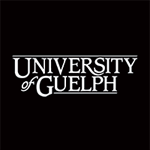Martin Martin
Martin Martin’s travelogue, A Late Voyage to St. Kilda, is, at its heart, an attempt to explain the geography and inhabitants of the isolated community of St. Kilda. The Scottish writer wrote a detailed account of his visit to the remote island chain in 1697. At the time of his arrival, Martin was able to record the community at its greatest extent (around 180 residents) and observed many of their traditional Christian practices that endured for generations. In one excerpt, Martin interviewed several inhabitants and learned of their trust in giben (the fat of greylag geese) as a form of treatment for nearly all ailments. He determined their cultural traditions, mythologies, and questionable understandings of medicine indicated they were victims of a great ignorance. Martin was enamoured of their supposed blissful ignorance, finding them unlike any of the other islanders or Highlanders he had encountered in his travels, as their sense of culture and identity formed around the limited means with which they could sustain themselves.
Being perhaps the most remote community in all of Scotland, located more than forty miles west of the Outer Hebrides (the Northwestern isles of Scotland), the islanders were little influenced by the mainlanders of Scotland, retaining religious and educational practices Martin found unusual. Their isolation meant they could live free of the politics and influences of the Scottish mainland, only interacting with a steward that visited annually to collect taxes for the Scottish noble (the Lairds of the Macleod) that considered the islands part of their domain. They were almost entirely self-sustaining and self-governing, ensuring their lives remained simple and focused on subsistence. Their only free time was devoted to religious and culturally significant events like marriage and prayer.
Martin wrote at a time significant to historians because the community of St. Kilda was at its largest and most isolated from the mainland, before missionaries and disease transformed it in the 18th century and beyond. Their understandings of the Christian religion were unique and strange to Martin because they were able to evolve with the small community in isolation. Martin’s travelogue is one of many that began emerging in the 17th century that have helped enlighten a fascinated audience of British wishing to study the strange Highlanders that lived at the edges of the known world.
To read the entire book click here


